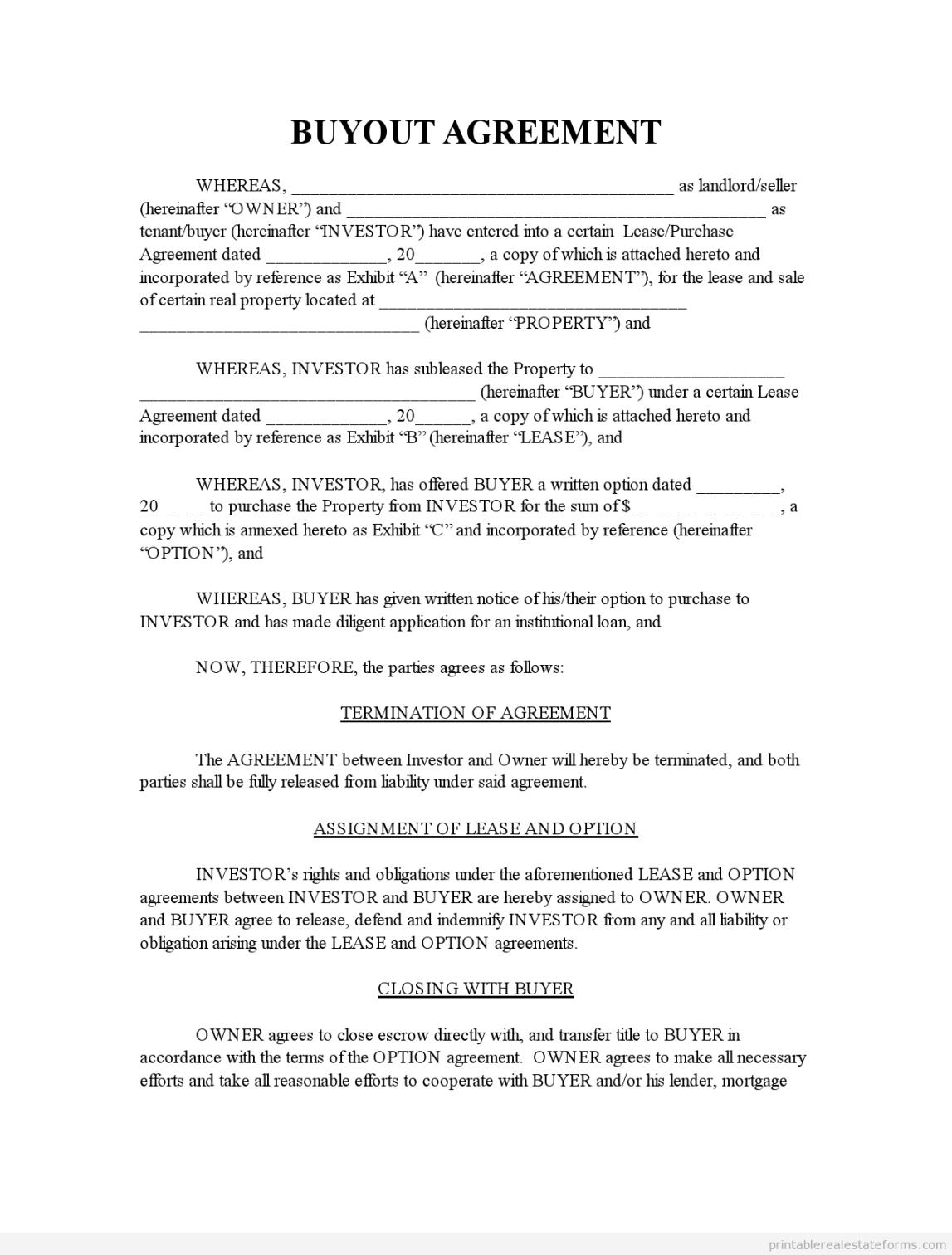Buyout agreements are essential legal documents that outline the terms and conditions under which a buyer can acquire a business or its assets from a seller. A well-crafted template can streamline the negotiation and execution process, ensuring a smooth transition for both parties.
Key Elements of a Buyout Agreement Template

1. Parties Involved: Clearly identify the parties involved in the transaction, including the buyer, seller, and any relevant entities.
2. Purchase Price: Specify the purchase price and payment terms, such as upfront payments, installments, or deferred payments.
3. Assets and Liabilities: Define the assets being transferred and any liabilities assumed by the buyer.
4. Due Diligence: Outline the due diligence process and any conditions precedent to closing the transaction.
5. Representations and Warranties: Include representations and warranties from both the buyer and seller regarding the accuracy of information provided and the condition of the business.
6. Covenants: Set forth covenants that the buyer and seller must abide by during the purchase process and post-closing.
7. Risk Allocation: Address the allocation of risks between the buyer and seller, including risks related to environmental issues, intellectual property, and liabilities.
8. Termination and Dispute Resolution: Specify the conditions under which either party can terminate the agreement and the dispute resolution mechanisms, such as arbitration or litigation.
9. Confidentiality: Ensure the confidentiality of sensitive information exchanged during the transaction.
10. Governing Law and Jurisdiction: Choose the governing law and jurisdiction for the agreement.
Design Considerations for a Professional Template
1. Clarity and Conciseness: Use clear and concise language, avoiding legal jargon that may confuse the parties.
2. Organization: Structure the template logically, using headings and subheadings to guide readers through the document.
3. Formatting: Use consistent formatting, including fonts, font sizes, and spacing, to enhance readability.
4. White Space: Incorporate ample white space to improve visual appeal and prevent the document from appearing cluttered.
5. Professional Layout: Choose a professional layout that reflects the seriousness of the transaction. Consider using a clean and modern design.
Additional Tips for Creating an Effective Template
Consult with Legal Counsel: Seek advice from a legal professional to ensure that the template complies with applicable laws and regulations.
Conclusion
A well-crafted buyout agreement template is essential for a successful business transaction. By carefully considering the key elements, design considerations, and additional tips, you can create a professional document that protects the interests of both the buyer and seller.